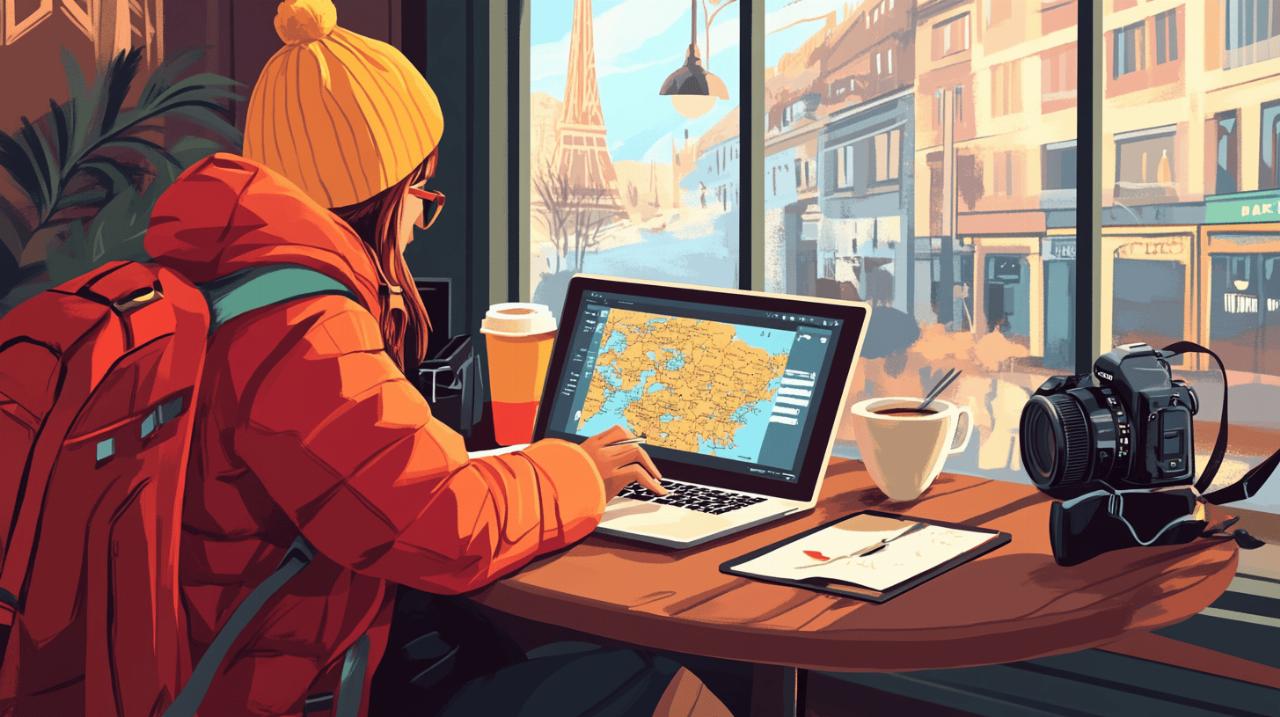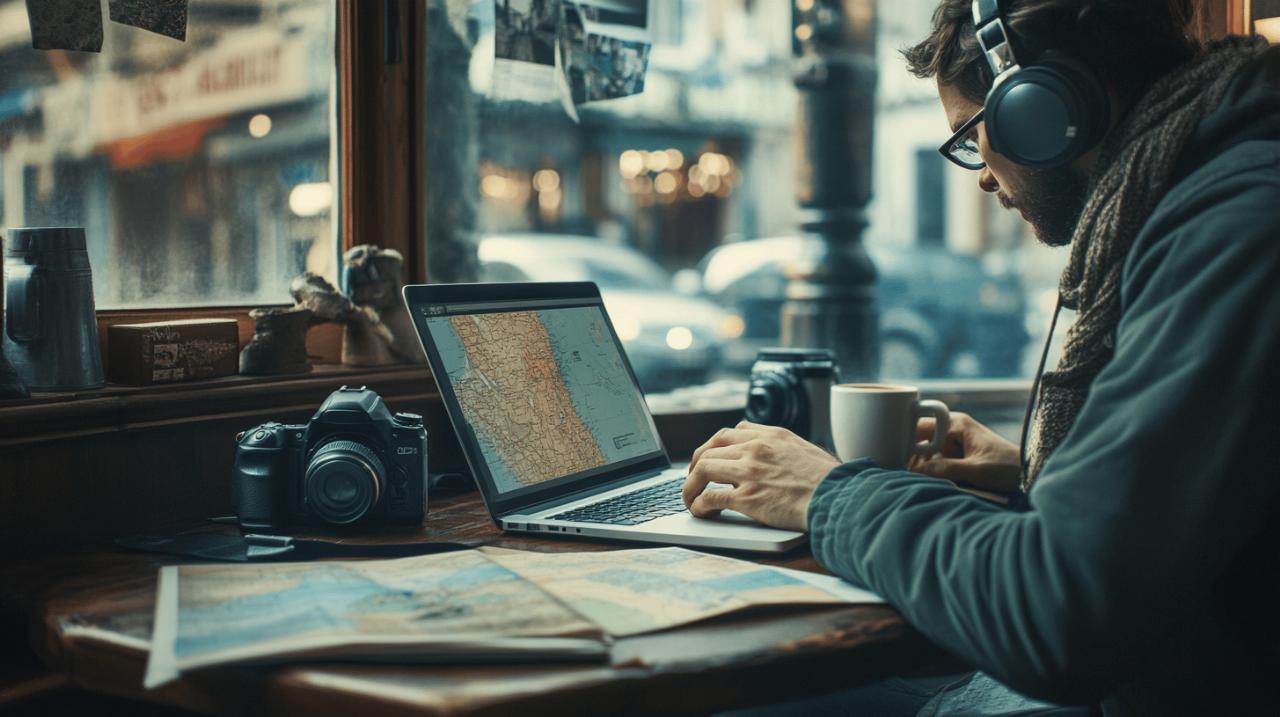In an age where capturing and sharing our adventures has become second nature, the intersection of wanderlust and digital connectivity presents both exciting opportunities and genuine challenges. Whilst posting stunning sunset photographs from a Greek island or recounting your latest escapade through the Scottish Highlands can inspire friends and followers alike, it also raises important questions about how much of ourselves we should reveal online. Striking the right balance between sharing memorable experiences and maintaining robust privacy protections has never been more essential, particularly as cyber threats continue to evolve and data breaches become increasingly commonplace.
Understanding Your Audience and Choosing the Right Platform
Identifying who will follow your travel stories
Before you begin documenting your journeys across continents or even just weekend breaks to the Cotswolds, it is worth considering who will be reading your updates. Are you sharing with close family and friends who eagerly await news of your latest adventure, or are you hoping to build a broader audience of like-minded explorers? Understanding your audience shapes not only the tone and style of your content but also the level of detail you choose to reveal. If your primary aim is to keep loved ones informed of your whereabouts and wellbeing, a private group or messaging service might suffice. Conversely, if you aspire to inspire strangers with your travel tales and photography, a public blog or social media presence could be more appropriate. The distinction is crucial because different platforms offer varying degrees of control over who sees your content and how that information can be used.
Selecting the Perfect Digital Space for Your Adventures
Once you have identified your audience, the next step involves choosing the most suitable platform to house your travel stories. Personal blogs offer complete creative freedom, allowing you to craft narratives that truly reflect your personality and unique travel style without the constraints imposed by character limits or algorithmic feeds. Meanwhile, social media channels such as Instagram or Facebook provide immediacy and ease of interaction, though they come with their own set of privacy considerations. It is important to evaluate the terms and conditions of each platform, as many collect vast amounts of data including your browsing activity, purchasing habits, and even information gleaned from smart devices. Research indicates that less than ten per cent of social media users feel very confident that their data is adequately protected, and nearly half of all companies experienced a data breach in recent years. Therefore, selecting a platform that aligns with your privacy expectations is as important as choosing one that matches your creative vision.
Crafting compelling visual content that tells your story
Capturing and curating your best travel photography
Visual storytelling lies at the heart of compelling travel content, and the quality of your photography can make or break the narrative you wish to convey. Rather than overwhelming your audience with hundreds of similar shots, focus on selecting only the very best images that genuinely depict the highlights of your adventure. This curation process not only enhances the overall aesthetic of your digital presence but also respects the time and attention of your viewers. Consider the composition, lighting, and emotional resonance of each photograph before sharing it online. A well-chosen image can transport your audience to a bustling Moroccan souk or a serene Norwegian fjord, evoking the sights, sounds, and even scents of the location. Moreover, being selective about what you post can inadvertently serve as a privacy safeguard, as fewer images mean fewer opportunities to accidentally reveal sensitive information such as hotel names, flight numbers, or other details that could compromise your security.
Creating authentic visual narratives without compromising quality
Authenticity is the currency of modern travel storytelling, and audiences increasingly value genuine experiences over overly polished or contrived content. Whilst it is tempting to apply heavy filters or stage photographs for maximum impact, there is something inherently appealing about raw, unvarnished glimpses into your journey. This approach not only fosters a deeper connection with your audience but also reduces the pressure to present a perfect version of your travels. However, authenticity should not come at the expense of safety. Be mindful of what your images reveal about your location and schedule. Posting in real time can alert opportunistic individuals to the fact that your home is unoccupied or that you are in a vulnerable position abroad. Instead, consider sharing your experiences retrospectively, once you have safely moved on from a particular location. This slight delay can significantly reduce the risk of identity theft or other forms of exploitation, particularly when using unsecured public Wi-Fi networks that are notoriously vulnerable to cyber attacks.
Establishing privacy boundaries for safe online sharing
Determining what information to keep private during your travels
 One of the most critical aspects of sharing travel experiences online is deciding what information should remain private. Whilst it might seem harmless to post a photograph of your boarding pass or hotel key card, such images can inadvertently expose personal details that could be exploited by malicious actors. Similarly, revealing your exact location or travel dates in advance can make you a target for theft, both physical and digital. It is wise to adopt a policy of disclosing only what is necessary to convey the essence of your experience. For instance, mentioning that you are in Paris is generally acceptable, but specifying the precise name and address of your accommodation is not. This approach extends to other sensitive documents such as passports, credit cards, and travel insurance details, which should never be photographed or shared online. Travellers are particularly vulnerable to identity theft and fraud, especially when relying on public Wi-Fi in airports, hotels, and cafés, where cybercriminals can easily intercept unencrypted data.
One of the most critical aspects of sharing travel experiences online is deciding what information should remain private. Whilst it might seem harmless to post a photograph of your boarding pass or hotel key card, such images can inadvertently expose personal details that could be exploited by malicious actors. Similarly, revealing your exact location or travel dates in advance can make you a target for theft, both physical and digital. It is wise to adopt a policy of disclosing only what is necessary to convey the essence of your experience. For instance, mentioning that you are in Paris is generally acceptable, but specifying the precise name and address of your accommodation is not. This approach extends to other sensitive documents such as passports, credit cards, and travel insurance details, which should never be photographed or shared online. Travellers are particularly vulnerable to identity theft and fraud, especially when relying on public Wi-Fi in airports, hotels, and cafés, where cybercriminals can easily intercept unencrypted data.
Implementing smart security practices for your digital footprint
Beyond being selective about what you share, implementing robust security measures is essential for protecting your digital footprint whilst travelling. Strong, unique passwords are vital, and using a password manager can help you maintain complex credentials without the risk of forgetting them. Multi-factor authentication adds an additional layer of protection, making it significantly harder for unauthorised individuals to access your accounts even if they manage to obtain your password. When using public computers, always switch to incognito mode and clear your browsing data after use, and avoid logging into financial accounts altogether on shared devices. It is also advisable to turn off Wi-Fi, GPS, and Bluetooth when these features are not in use, as leaving them active can expose your device to unwanted tracking and hacking attempts. A virtual private network, or VPN, is an invaluable tool for encrypting your internet connection, particularly when you must use public Wi-Fi. This technology hides your IP address and ensures that your browsing activity remains private, shielding you from prying eyes and potential data breaches. After your trip, it is prudent to check your credit card statements for any unauthorised transactions, change passwords for critical accounts, and run antivirus scans on all devices to detect and remove any malware that may have been picked up during your travels.
Building an inspiring travel presence that connects with others
Developing your unique voice and personal travel style
Creating a memorable travel presence online is not solely about posting beautiful images or visiting exotic destinations; it is about developing a unique voice that resonates with your audience. Your personal travel style, whether it involves luxury retreats, budget backpacking, or cultural immersion, should shine through in every post. Authenticity and consistency are key. Sharing the challenges and mishaps alongside the triumphs makes your narrative more relatable and engaging. This honest approach also fosters trust with your audience, who are more likely to engage with content that feels genuine rather than overly curated. As you refine your voice, consider the broader impact of your digital presence. Are you inspiring others to explore responsibly and respect local cultures, or are you inadvertently contributing to overtourism and environmental degradation? Thoughtful storytelling can elevate your travel content from mere entertainment to a force for positive change, encouraging others to travel mindfully and sustainably.
Engaging your community whilst maintaining authentic experiences
Building a community around your travel content requires more than just posting regularly; it involves genuine engagement with those who follow your journey. Responding to comments, asking questions, and sharing insights creates a sense of connection that transforms passive viewers into active participants. However, this engagement must be balanced with the need to remain present in your actual experiences. It is easy to become so focused on capturing the perfect shot or crafting the ideal caption that you miss the moment itself. Striking this balance is essential for maintaining the authenticity that makes travel content compelling in the first place. Moreover, being mindful of how much time you spend online whilst travelling can protect you from shoulder surfers and other physical security threats. Keep your devices secure with strong passwords and two-factor authentication, and be cautious about displaying sensitive information on your screen in public spaces. By prioritising both digital security and real-world presence, you can create a travel narrative that is not only inspiring but also safe and sustainable.





